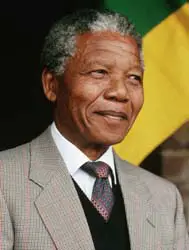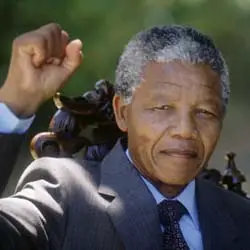Nelson Mandela
Nelson Mandela was the leader of the South African movement to freedom and his participation in the various protests and his requirement to see equality in his country led him to fight in a nonviolent way.


Nelson was the son of a tribal chief and was therefore able to achieve some of the best educational opportunities that were offered to South African black citizens. While in school and then later in his young life, he began to witness the prejudice and injustice that was expressed to the black South Africans. Nelson continued to go to college and achieved his law degree in 1952.

It is important to note that during this time in South Africa, the government was ruled by white men that set up the laws and treated South African’s own citizens as second class. The white domination that was set up was a situation that would inevitably explode. Nelson joined a number of organizations to fight against the oppression. He joined the African National Congress and then assisted in forming the ANC Youth League.

The white dominated leaders established policies called ‘apartheid’, which means to separate or keep apart. They established requirements that gave white citizens many benefits but continued to keep the black citizens pushed down. By 1952, Mandela was selected at the National Volunteer-in-Chief of the Defiance Campaign. This was a campaign set up to protest against six unjust laws that involved both the ANC and the South African Indian Congress. Mandela and 19 others were arrested and this became the first of many accusations.

Mandela had, by this time, become a major force in the South African voice for freedom and justice. He traveled to speak at All-in Africa Conference which resulted in the request to send the Prime Minister the request for a non-racial constitution and if it wasn’t agreed to, there would be a national strike for the independent republic of South Africa. Mandela was forced to go ‘underground’ in hiding, as the government officials sought him out for sabotage, along with other members of his group.


After his capture, during his 1964 trial and facing execution, Mandela gave his famous “Speech from the Doc”
“I have fought against white domination, and I have fought against black domination. I have cherished the ideal of a democratic and free society in which all persons live together in harmony and with equal opportunities. It is an ideal which I hope to live for and to achieve. But if needs be, it is an ideal for which I am prepared to die.”

The next day, Mandela and seven others were sentenced to life in prison. During his time in prison, the white guards and wardens tried to ‘break’ Mandela’s spirit, giving him hard labor. Mandela refused to give up his hope and dreams for a free Africa.

In the meantime, the story of Nelson Mandela and the plight of the South Africans that were fighting against apartheid began to spread around the world. Various organizations in many countries protested against the white rule and the laws that were set in place. Due to an illness in 1990, Mandela was sent to a hospital to recuperate and be treated and finally, the world pressure made the government give in and Mandela was released.

The release of Mandela signaled the final end of apartheid and in 1993 Nelson and his friend President FW de Klerk jointly won the Nobel Peace Prize. April 27, 1994, Nelson Mandela took great pride in being able to vote for the first time.

Even though Mandela was now older, 1994 was South Africa’s first democratic election and Mandela was elected the first president.
Mandela established many non-profit organizations to assist in education and the welfare of his people, including: The Nelson Mandela Children’s Fund, The Nelson Mandela Foundation and The Mandela Rhodes Foundation.




